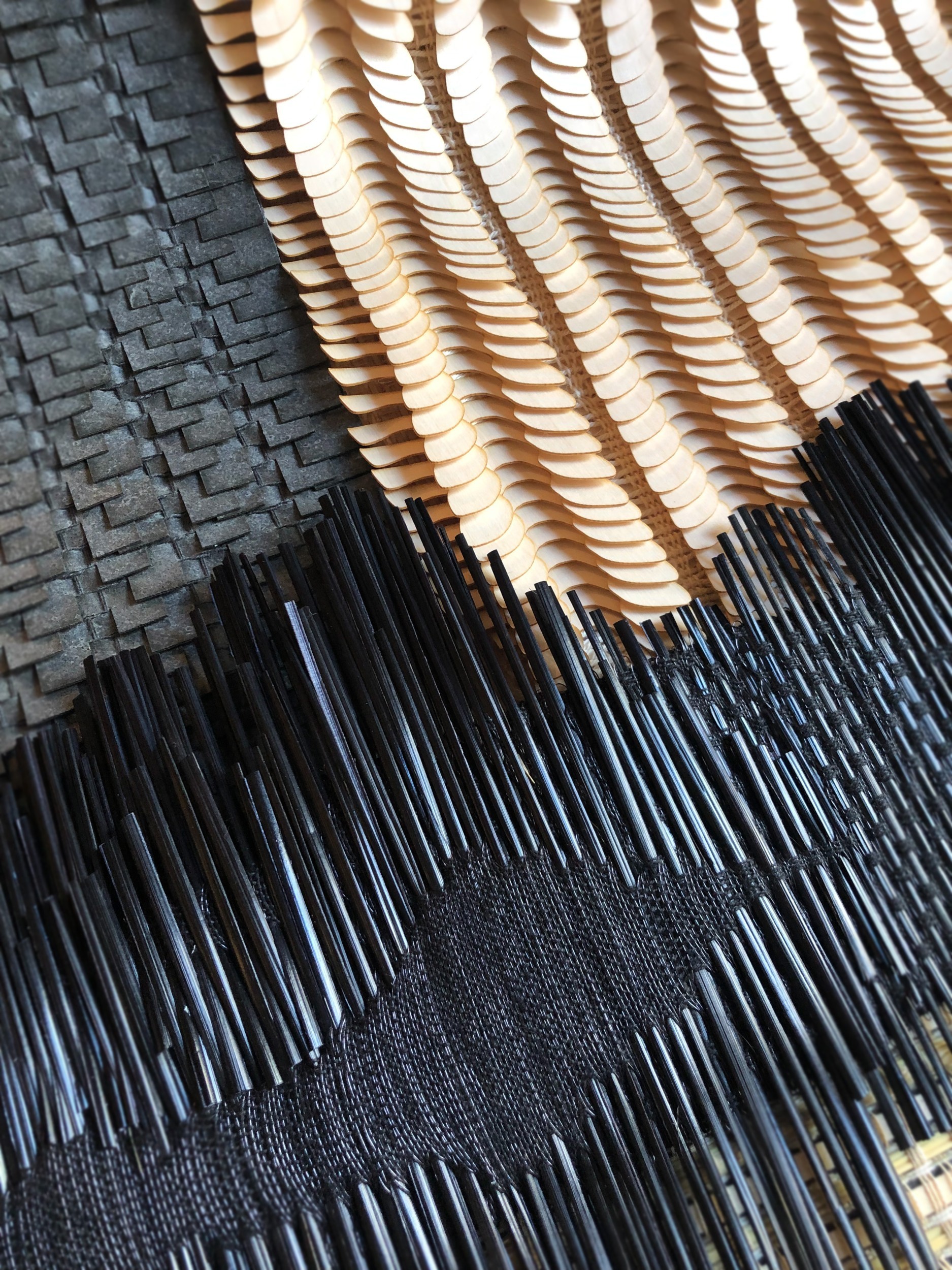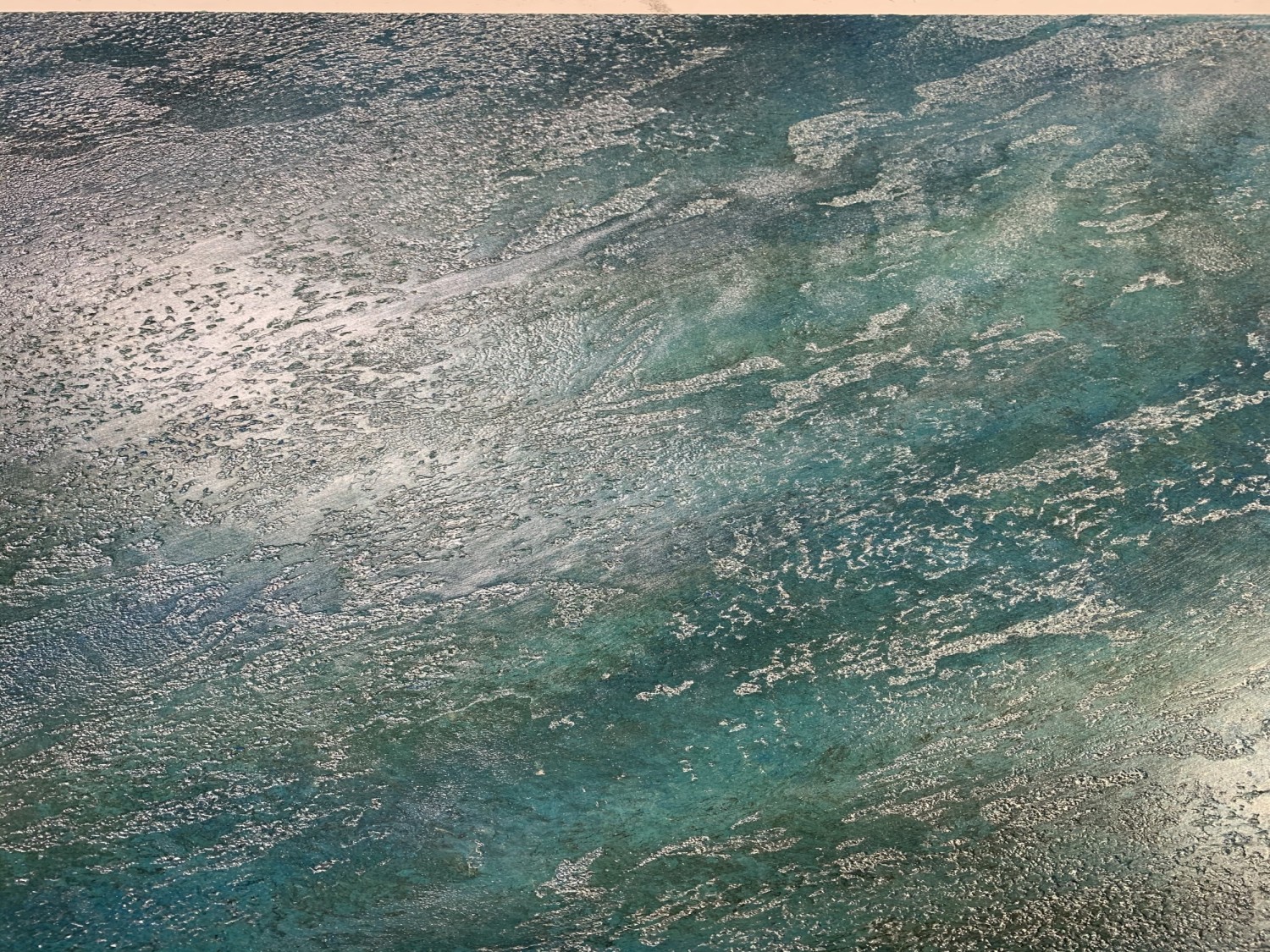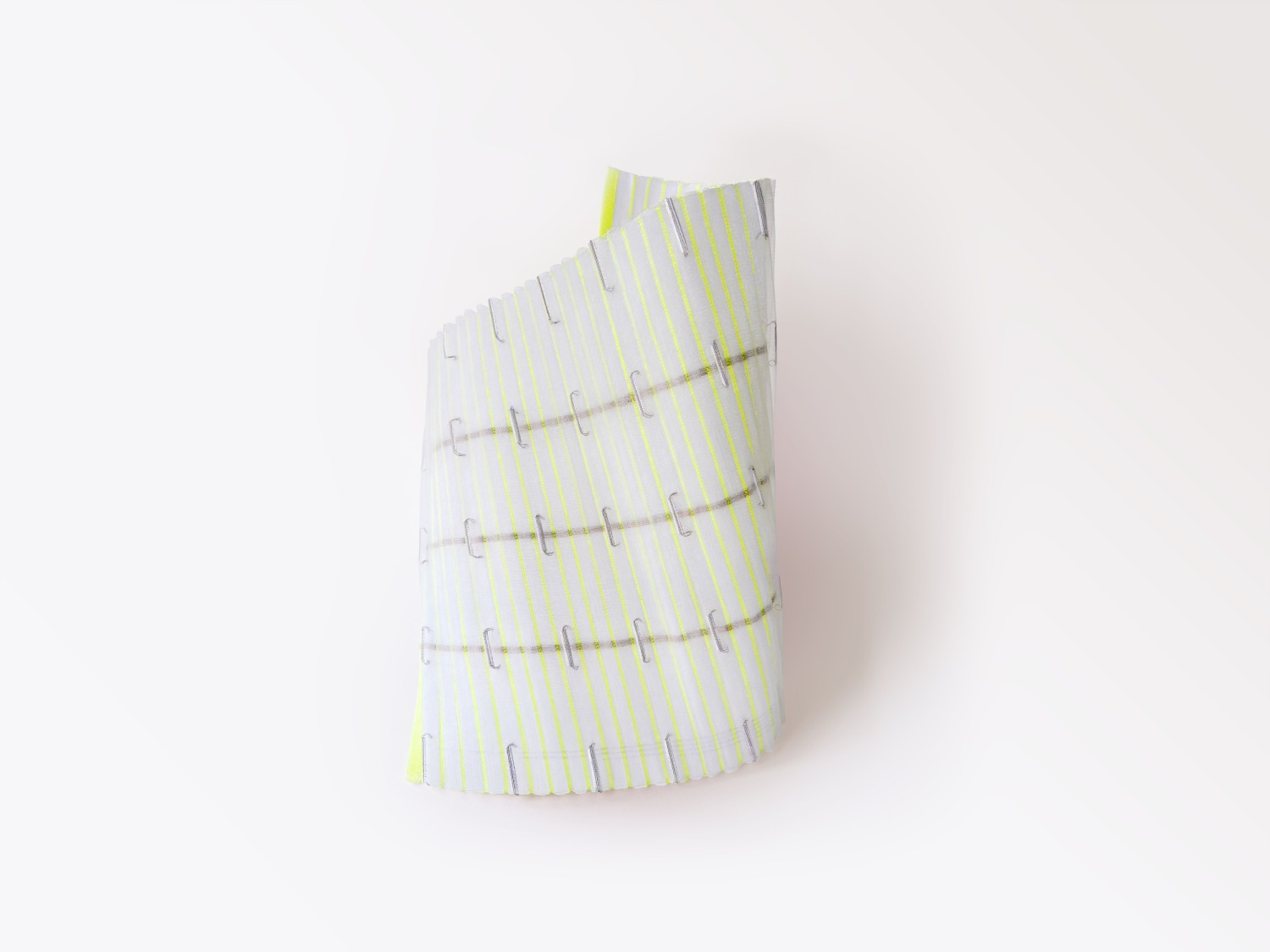Weaving wood, stone and rye straw, Curiosité textile • © Stéphanie Lacos
Disappearing and reappearing, fading away and coming back to the forefront, such is the fascinating story of materials and traditional know-how. The Made in France exhibitions. Une histoire du textile (A history of textile) (at the National Archives of Paris, until 27 January 2025) or Christofle (at the MAD until 20 April 2025) remind us of this fluctuation. Why do some materials have the ability to play with our perceptions? When we think of linen, silk, wool, straw for marquetry, feathers for feather workers or even wicker or leather, earthenware and its derivatives, the use of metal in all its forms, it is fascinating to observe these swings of the pendulum. After the total dominance of plastics originating in our anonymous borderless exchanges, the narrative values and uses of materials arising from our relationship with time and traditional skills have made a deserved comeback. Although these materials never left us, it is their use that has been eclipsed. Once the usefulness began to decline, the know-how was no longer passed on. But typically the material always endures. Wool, wood and metal have endured, while some have gone into hibernation like certain animals or plants.
Today we are witnessing their springtime with various events, e.g. “Les Rendez-vous de la matière”, that brings new light and warmth. The emergence from the chrysalis is not simply down to luck but is part of a cultural outlook.
To rediscover a material, the archaeologist in us must come to the fore. This tracker must piece together the few available fragments to rebuild worlds. They propose new fragmented stories that, despite being disconnected, nonetheless constitute a new era.
As Paolo Rumiz so aptly describes in his unique book (Appia, Flammarion) about the rediscovery of the mythical Appian Way between Rome and Brindisi in the south of Italy, there are various ways of bringing the vestiges back to life. The first step is to find them by searching through the ruins. In the specific case of the artistic professions, the scope of exploration has various facets, i.e. museums, of course, but also the backyards of our forebears or garage sales in our cities. We have all found ourselves perplexed by a metal tool template or a wooden object, and not had the slightest idea of what it is used for, when it was used and its sphere of activity. The same kind of perplexity awaits the archaeologist digging in a plot of land and discovering a piece of pottery or a broken mosaic.
When faced with the unknown of a piece that is just one fragment of a bigger object, it is up to the historian, along with the designer and craftsman, to put the story back together again using the evidence to work out the changes in practice, and hence the life of the object. Like observing a fishing float bobbing on the surface of the water, the craftsman-historian finds fragments of memories and interprets the occasional diverse tiny clue and then obtains confirmation through research and travel. He puts the visible elements back together to create beacons, that indicate the way through the darkness. The explorer in search of materials and techniques must open up the way to this rebirth, i.e. find a sense of direction among the fragmentary witnesses and reconstruct a plausible pathway. It is then necessary to put oneself in the shoes of our ancestors, like a designer working on tracing paper, to try to consolidate the lines of the pencil writing the story with more or less assurance. And it is in these hesitations, these spasms of thought and action, that the story of the present is forged. Indeed, it is by searching for clues that the techniques and thoughts about unusual practices take shape. The contemporary techniques of a basket maker or goldsmith are sequenced by observing an object and an ancient marker. Innovation lies in this gap between recovered time and the predictions of what could be.
By examining visible fragments, made up of these objects from the past whose use and temporal perspective have been forgotten, we are actually asking about our time and the signs lodged in our memory that are so embedded in our societies with their rich past. These pieces of the mosaic, fragments of a distant world, could only be signs that we carefully preserve, like relics, so that they do not disappear. These are objects and signs, but also words, whose meaning must be recomposed to make a new song.
This reconstruction of objects from materials (and hence know-how) that has become obsolete, and more accurately, whose know-how has faded away, requires a definite commitment. It could even be said to be a political act in the sense that it engages a community in reclaiming a memory, which far from being empty of meaning, is steeped in the modern-day narrative. Rediscovering the meaning and plasticity of basketwork, feathers or metal is a way of rethinking our relationship with the world today.
Our perspective is to adopt a way of thinking and taking control over the long term rather than consuming the short-lived appropriation of the disposable (the consumer society). This can emerge with a detailed knowledge of a materiality. The work of the artist metalworker Steven Richard or the coppersmith Jonathan Soulier raises the question of our link between surface/material and practice/know-how. If the two craftsmen exploit some ancient know-how and material, they are looking to adopt these two aspects with contemporary aspirations. What’s more, the new modernity cannot be in the erasure of the moment, or in the fantasy of a past preserved in the cold of our present-day imaginations, like memorial glaciers. The past of materials must be examined in the light of our current needs, and creativity and innovation will make them efficient and available.
Finally, the materials, from their apparent neutrality, not to say their transparency, become once again the reflection of our culture and civilisation. Having been neglected, forgotten and even disparaged, the material of our consumer extensions becomes part of our life journey. They are no longer the excuse for the works, but their very purpose. The sculptor Michelangelo or the goldsmith Benvenuto Cellini thought and created through matter. •


